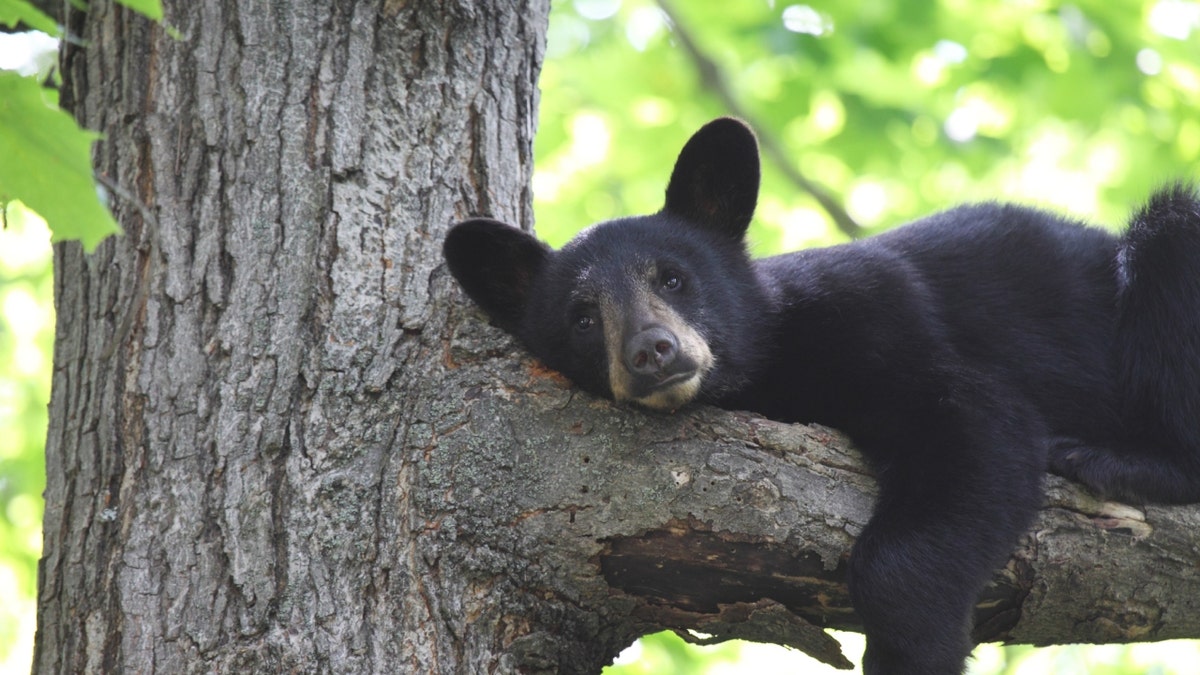Fox News Flash top headlines for August 27
Fox News Flash top headlines are here. Check out what's clicking on Foxnews.com.
The New Mexico Game Commission will consider in October increasing hunting limits for black bears in several areas of the state.
Stewart Liley, the state Game and Fish Department’s head of wildlife management, presented a plan to the commission on Friday, recommending that the total kills allowed be increased to 864 from the current 804.
The plan also suggested keeping cougar hunting limits the same in all but one management zone, where it would be reduced by 17 kills.
BLACK BEAR, CUB KILLED AFTER ATTACKING MAN IN HIS SOUTHEASTERN IDAHO HOME
"We respect the science, and we respect both sides of what’s being presented — and we’re trying to strike a balance," Commissioner Sharon Salazar Hickey told the Santa Fe New Mexican.
New Mexico’s overall kill limit now is 8% to 12% for a mature population of bears and 17% to 24% for cougars.

A black bear cub is shown relaxing in a tree in Ontario, Canada. (mlorenzphotography via Getty Images)
Hunters aren’t allowed to kill cubs or kittens or mothers accompanying the babies.
BEAR CAUGHT IN CALIFORNIA HOMEOWNER'S POOL TRYING TO 'BEAT THE HEAT': 'I DON'T BLAME HIM'
Wildlife advocates protest the increased killing of animals they say are vital to the ecosystem while ranchers and hunters generally support the effort.
"We call for a reduction of the kill quotas across the board for both bears and cougars for the next four years," said Mary Catherine Ray, wildlife chairperson for the Sierra Club Rio Grande Chapter.
Liley said the commonly used term "quotas" is incorrect because the state isn’t trying to achieve these numbers but rather is placing a ceiling on how many of the animals can be hunted.
CLICK HERE TO GET THE FOX NEWS APP
He said the hunting limits for bears in most parts of the state is set at about 10% even though research shows the populations could sustain up to 14%.
"We’re taking more of a conservative approach to ensure that would be a sustainable harvest," Liley told commissioners. "An important part is we set the limit at 10%, but we never reach that 10% on a larger basis."


